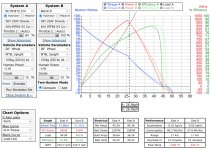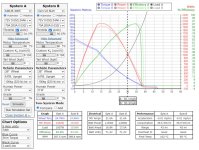Hello,
I've been playing around with ebikes.ca's motor sim, and stumbled upon this.

How is it possible that a 9c 212 with only 56 poles reaches nearly the same climbing efficiency of a 10% slope than the infamous bionx D with 88 poles ? Sure the 212 has twice the stator width than the bionx, but shouldn't the extra poles more than make up for it ?
I've been playing around with ebikes.ca's motor sim, and stumbled upon this.

How is it possible that a 9c 212 with only 56 poles reaches nearly the same climbing efficiency of a 10% slope than the infamous bionx D with 88 poles ? Sure the 212 has twice the stator width than the bionx, but shouldn't the extra poles more than make up for it ?


